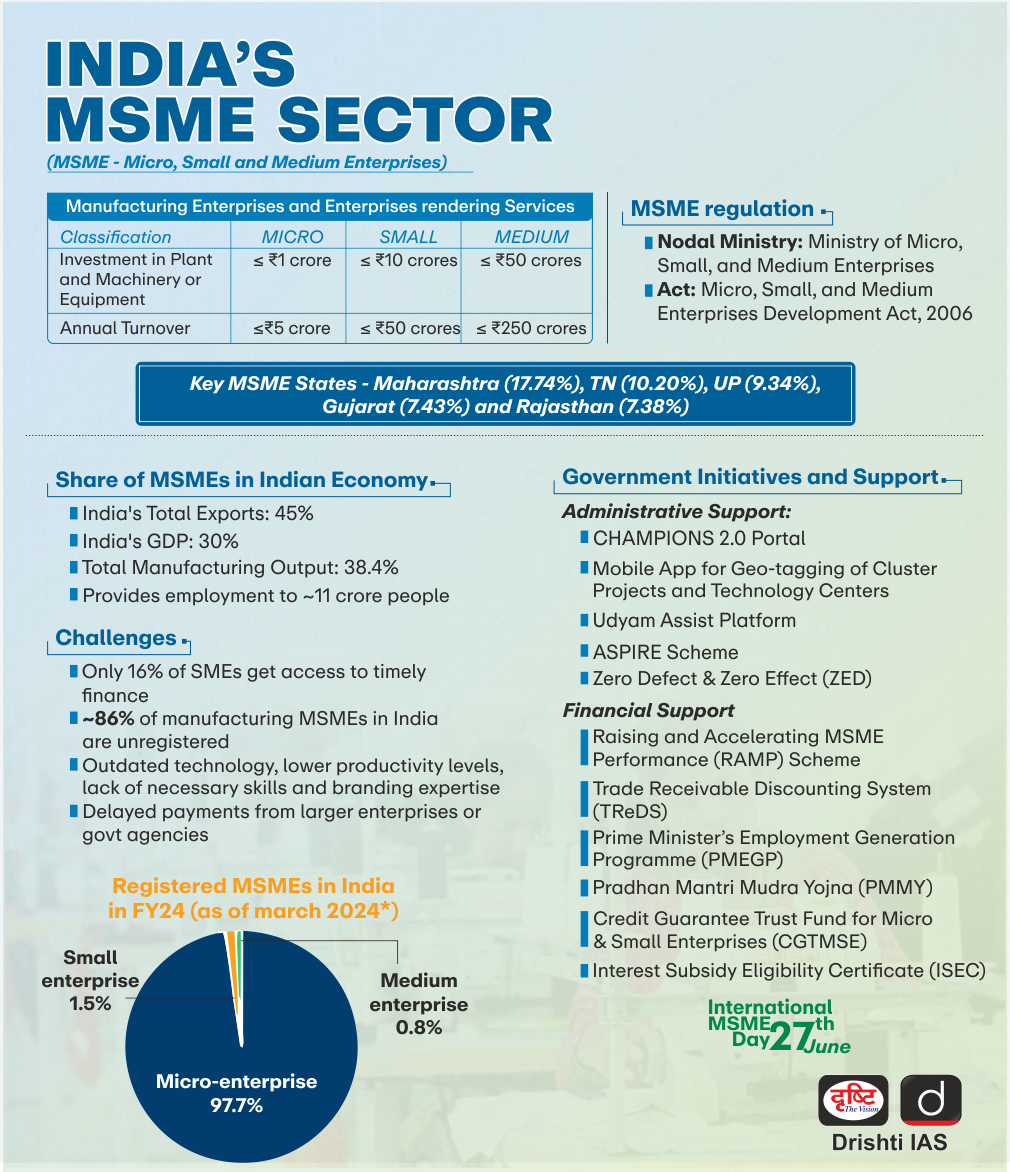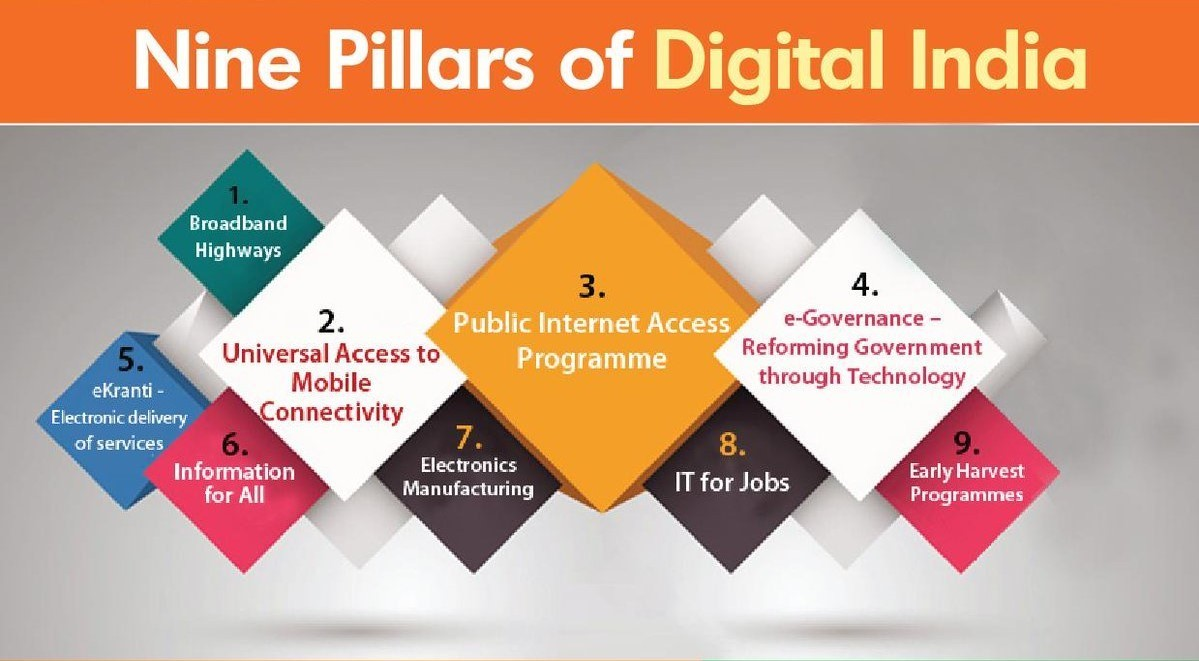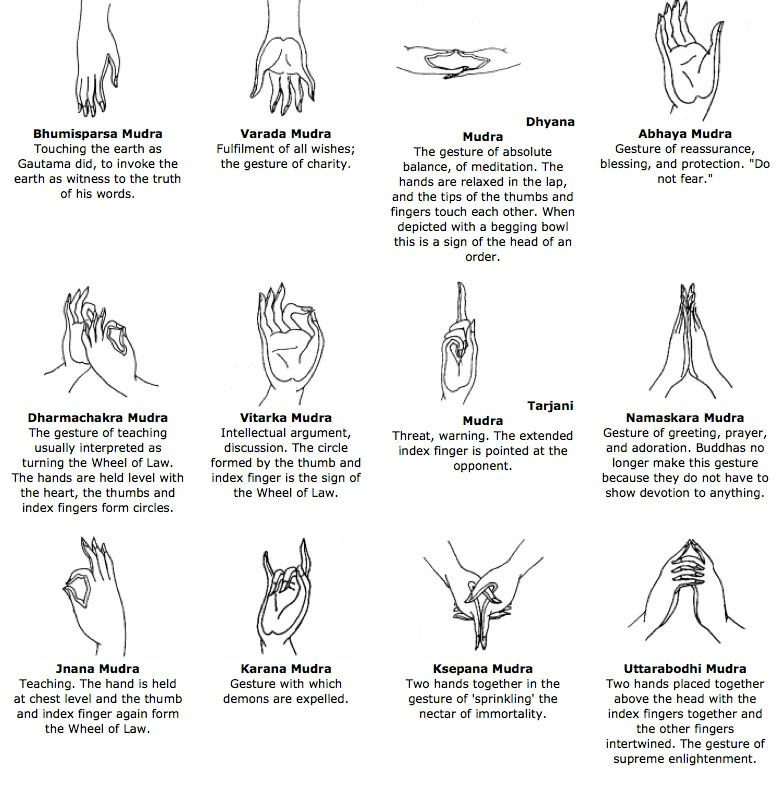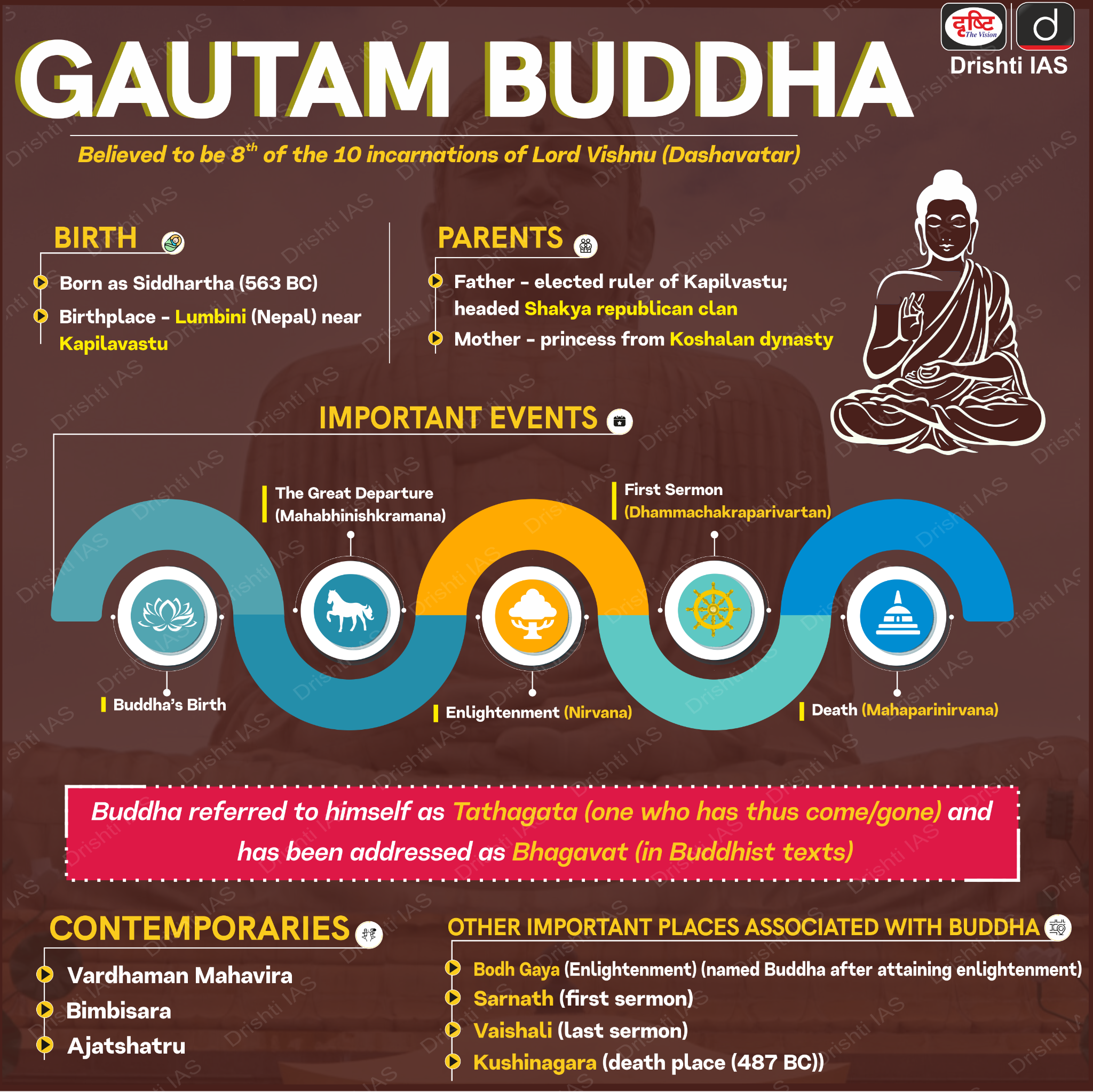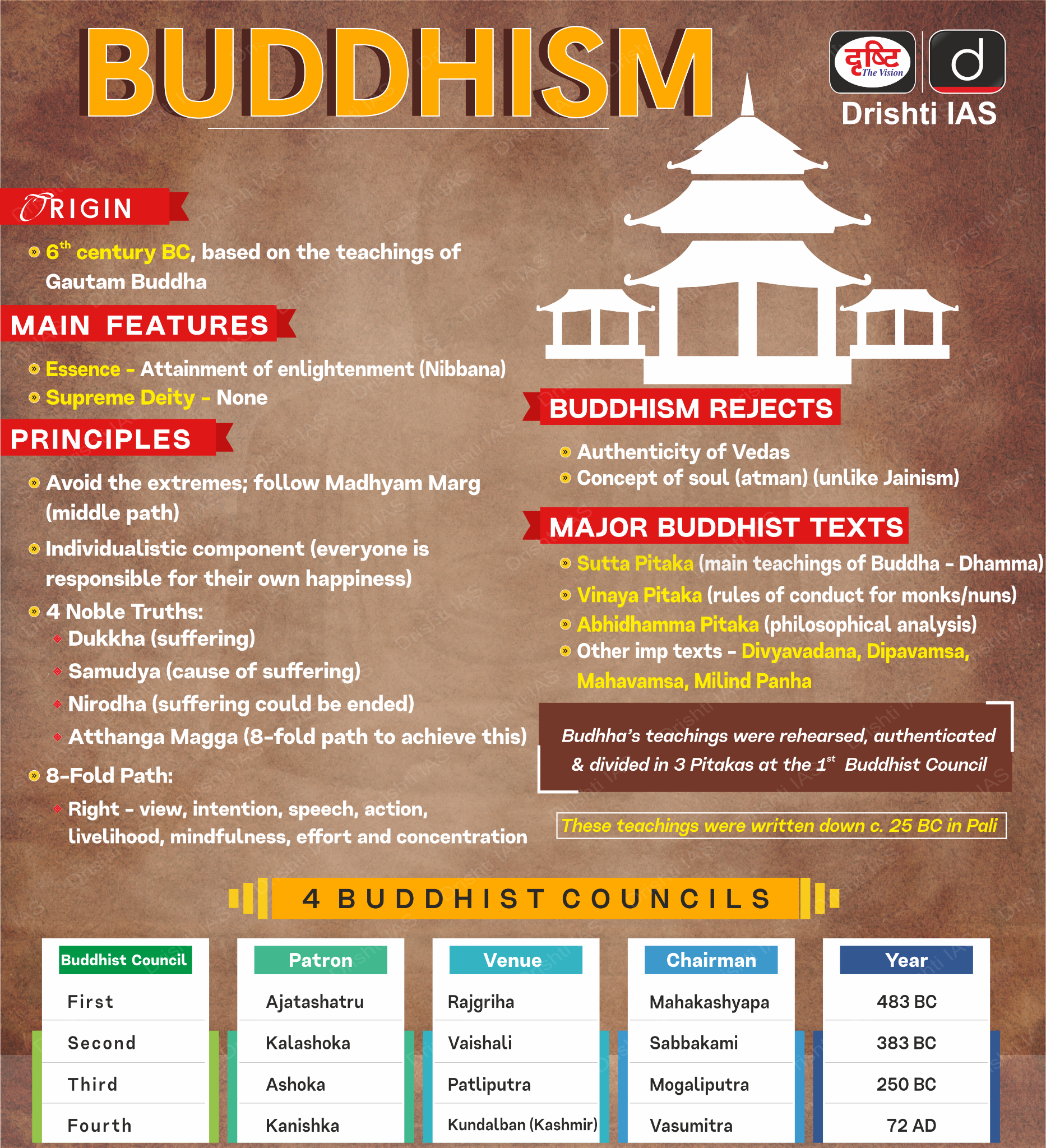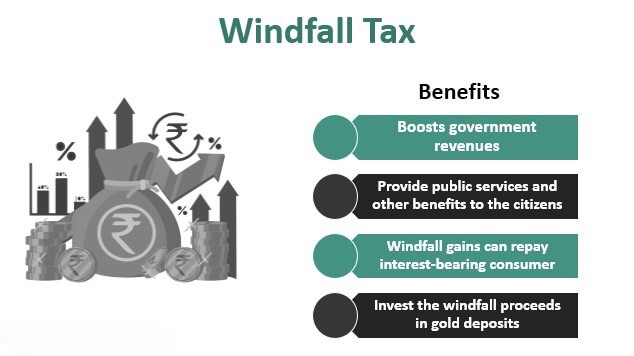Infographics
Governance
Debate Around Education as a ‘State Subject’
For Prelims: Unified District Information System For Education (UDISE), National Education Policy 2020, National Programme on Technology Enhanced Learning, PRAGYATA, PM SHRI Schools, National Family Health Survey-5, United Nations Children's Fund (UNICEF), Artificial Intelligence.
For Mains: Features of National Education Policy 2020, Major Issues Related to the Education Sector in India, Government Initiatives Related to Educational Reforms
Why in News?
Recently, controversies surrounding exams like NEET-UG and UGC-NET have reignited the debate on whether education should be transferred back to the state list.
What is the Status of Education System in India?
- History:
- The ‘Gurukul’ was a type of education system in ancient India with shishya (students) living with the guru in the same house.
- Nalanda, possessing the world's oldest university system, drew students globally to Indian knowledge traditions.
- British Government brought various reforms in the education system through Macaulay Committee recommendations, Woods’ Despatch, Hunter Commission Report, and Indian University Act, 1904 which had a profound impact on society.
- Current Status of Education in India:
- India's overall literacy rate of 74.04% is below the world average of 86.3%. A significant number of states in India fall within the average range, just slightly above the national literacy level.
- The gender gap in literacy in India began narrowing in 1991, with an accelerated pace of improvement. However, the current female literacy rate (65.46%-Census 2011) in India still significantly lags behind the global average of 87%, as reported by UNESCO in 2015.
- Different Legal and Constitutional Provisions:
-
Legal Provisions:
- The government has implemented the Sarva Shiksha Abhiyan (SSA) as part of the Right to Education (RTE) Act, 2009 for primary level (6-14 years).
- At the secondary level (age group 14-18), the government has extended the SSA to secondary education through the Rashtriya Madhyamik Shiksha Abhiyan.
- Higher education, encompassing undergraduate (UG), postgraduate (PG), and MPhil/PhD levels, is addressed by the government through the Rashtriya Uchhattar Shiksha Abhiyan (RUSA) to meet the requirements of higher education.
- All these schemes have been subsumed under the umbrella scheme of Samagra Shiksha Abhiyan.
- Constitutional Provisions:
- Initially, Article 45 of the DPSP aimed to provide free and compulsory education for children up to 14 years, later amended to include early childhood care, and eventually made a fundamental right(Article 21A) through the 86th Constitutional Amendment Act of 2002 due to unfulfilled objectives.
- Entry 64 and 65 of the Union List in the Schedule 7 of the constitution lists Institutions for scientific or technical education financed by the Government of India, professional, vocational or technical training etc.
-
- Education as a ‘State’ Subject:
- The Government of India Act, 1935, created a federal structure, placing education under the provincial list.
- In post-independence India, education remained a state subject.
- However, during the emergency, the Swaran Singh Committee recommended moving education to the concurrent list, implemented through the 42nd constitutional amendment in 1976.
- The 44th constitutional amendment was an attempt to correct the changes to a certain extent.
Government Initiatives Related to Educational Reforms
International Practices to Govern Education System
- United States: State and local governments set educational standards, while the federal department focuses on financial aid and equal access.
- Canada: Education is managed by the provinces.
- Germany: Legislative powers for education rest with the Länder (states).
- South Africa: Two national departments govern education, with provincial departments handling local implementation.
- Finland’s Model of Governance: Unlike many countries, Finland doesn’t rely on standardized tests. The system emphasises collaboration among schools, teachers, and students, fostering a supportive learning environment.
Why Should Education be on the State List?
- Original Constitution Design: Education was initially placed on the State List by the framers of the Constitution, recognising that local governments are better equipped to handle educational needs.
- 42nd Amendment Impact: The unilateral shift of education to the Concurrent List during the Emergency undermined the federal structure.
- Allowing states to have exclusive control over education would restore the balance of power envisioned by the framers of the Constitution.
- State-Specific Policies: States can tailor their educational policies to their unique cultural, linguistic, and socio-economic contexts. This ensures that education is relevant and responsive to the needs of the local population and can be crucial for improving literacy rates and educational outcomes.
- For example under Article 350A endeavour should be made to provide primary education in the mother tongue.
- Divergent Policies: The central government's policies, such as the National Education Policy (NEP) and National Eligibility cum Entrance Test (NEET), often conflict with state policies, leading to inefficiencies and disenfranchisement.
- Resource Allocation: States that invest significantly in their educational infrastructure should have the authority to regulate and benefit from their investments without interference from the central government.
- The Ministry of Education's 2022 report indicates that states bear the majority of educational expenditure (85%).
- Merit Determination: Centralized entrance exams like NEET do not necessarily reflect the merit or potential of students from diverse educational backgrounds.
- States should have the flexibility to design admission criteria that better assess and foster student potential.
- The Tamil Nadu Admission in Professional Educational Institutions Act 2006, upheld by the Madras High Court and the Supreme Court, supports the argument that common entrance exams do not determine merit.
- In the case of Neil Aurelio Nunes and others Vs Union of India and others, the Supreme Court observed that marks are not the determining factor of merit.
- Issue of Accountability: If the significant institutes are brought under the ambit of the state, it would result in better accountability of the state with respect to quality education.
Why Education Should Not be on the State List?
- Poor Status of Primary Education: As per the ASER 2023 Report, most rural kids of 14-18 can’t do Class 3 math while over 25% can’t read. This reflects the poor governance of education in the states.
- National Integration and Mobility: The Kothari Commission (1964-66) emphasized the importance of a common educational framework across states to foster national integration and cultural exchange.
- A concurrent list allows the Centre to set core national standards while states can adapt them to local contexts, promoting both unity and diversity.
- Ensuring Minimum Standards and Equity: The Right to Education Act (RTE), 2009, guarantees a minimum level of education across India.
- Keeping education concurrent allows the Centre to monitor implementation, ensuring disadvantaged sections have access to quality education irrespective of their state.
- Standardisation of Skills and Employability: Reports by FICCI (Federation of Indian Chambers of Commerce and Industry) highlight the need for a standardised national curriculum to ensure graduates have the skills required by a pan-India job market.
- A concurrent list facilitates this by establishing a common framework while allowing states to tailor vocational training.
- Regulation of National Institutions and Accreditation: Keeping education concurrent allows the Centre to maintain oversight and ensure quality standards in these institutions, which cater to students from across the country.
- Addressing National Concerns and Emergencies: The National Education Policy (NEP) 2020 outlines strategies for areas of national importance like digital literacy and artificial intelligence.
- New national challenges like climate change also require a unified educational approach.
- A concurrent list allows the Centre to develop national curricula that address these emerging issues while accommodating state-specific concerns.
Way Forward
- Collaborative Federalism: Focus should be on a "Collaborative Federalism" approach as suggested by the Kothari Commission (1964-66).
- This ensures national minimum standards set by the Centre while allowing states flexibility in curriculum, language, and pedagogy.
- Outcome-based Funding: Implement outcome-based funding mechanisms as recommended by the NITI Aayog in its Strategy for New India @ 75 document.
- This allocates resources based on learning outcomes, incentivizing states to improve educational quality.
- Decentralized School Management: Promote decentralised school management structures as envisioned in the Right to Education Act (RTE) 2009.
- This empowers School Management Committees (SMCs) with community participation, fostering local ownership and responsiveness.
- Teacher Training & Transfer Policy Reforms: Advocate for reforms based on the recommendations of the TSR Subramanian Committee Report (2009).
- This includes improved teacher training programs, transparent transfer policies, and performance-based incentives to create a more motivated and effective teaching force.
- Standardised National Assessment with State-Specific Benchmarks: Develop a standardised national assessment framework alongside state-specific benchmarks, inspired by the practices of countries like Australia. This allows for national comparisons while acknowledging regional diversities.
- Leveraging Technology for Equitable Access: Implement strategies outlined in the Government of India's "Pandit Madan Mohan Malaviya National Mission on Teachers and Teaching" (PMMMNMTT) to leverage technology for equitable access and quality education, particularly in remote areas.
- National Curriculum Framework with State Adaptations: Develop a flexible National Curriculum Framework (NCF) as suggested by the NCERT, allowing states to adapt it to their specific linguistic and cultural contexts. This ensures a balance between national goals and state needs.
|
Drishti Mains Question: Q. Transferring 'education' from the Concurrent List to the State List will lead to more effective policy implementation in the education sector. Comment. |
UPSC Civil Services Examination, Previous Year Question (PYQ)
Prelims
Q. Which of the following provisions of the Constitution does India have a bearing on Education? (2012)
- Directive Principles of State Policy
- Rural and Urban Local Bodies
- Fifth Schedule
- Sixth Schedule
- Seventh Schedule
Select the correct answer using the codes given below:
(a) 1 and 2 only
(b) 3, 4 and 5 only
(c) 1, 2 and 5 only
(d) 1, 2, 3, 4 and 5
Ans: (d)
Mains
Q. Discuss the main objectives of Population Education and point out the measures to achieve them in India in detail. (2021)
Q. How have digital initiatives in India contributed to the functioning of the education system in the country? Elaborate on your answer. (2020)

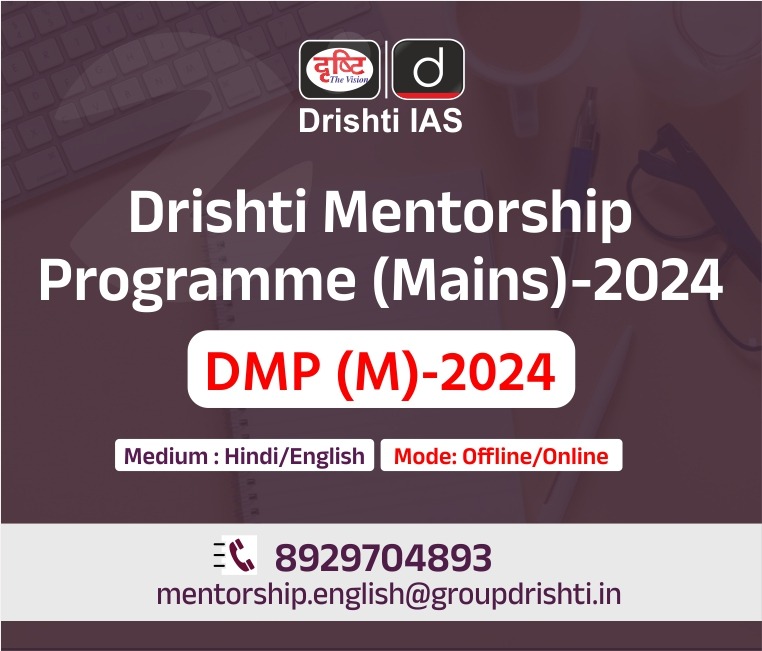
Governance
Nine Years of Digital India Initiative
For Prelims: Digital India initiatives, living standards, fostering transparency. E-governance, economic growth, Common Service Centres, IT skills, Digital Literacy, IT Act of 2000,
For Mains: Challenges, Initiatives of Digital India Initiatives.
Why in News?
Recently, the Prime Minister emphasised the substantial impact of Digital India initiatives, marking its successful nine-year journey. He characterised Digital India as a symbol of national empowerment, elevating living standards and fostering transparency.
What is the Digital India Initiative?
- About:
- Digital India, was launched on 1st July 2015 by the Indian Government.
- This program builds upon earlier e-governance efforts that began in the mid-1990s but lacked cohesion and interactivity.
- Objective:
- Narrowing the Digital Divide: The initiative works to lessen the disparity between tech-savvy individuals and those with limited digital access.
- Promoting Digital Participation: It strives to ensure equitable access to digital technology benefits for all citizens, encompassing areas like education, healthcare, and government services.
- Stimulating Economic Development: By tapping into technological advancements and innovative solutions, Digital India aims to drive economic growth across the country.
- Elevating Living Standards: The program seeks to enhance citizens' overall quality of life through the strategic application of technology in various aspects of daily living.
- Nine Pillars of Digital India Initiative:
- Broadband Highways: Focus on building extensive high-speed broadband networks nationwide to boost connectivity and digital empowerment.
- Universal Access to Mobile Connectivity: Extend mobile coverage to remote areas, enabling all citizens to engage with mobile services and participate in the digital economy.
- Public Internet Access Programme: Establish Common Service Centres in underserved areas to provide affordable internet access, addressing the digital divide and promoting digital literacy.
- E-Governance, Utilize Technology to Streamline Government Services: Improving accessibility, efficiency, and transparency while enhancing citizen engagement.
- E-Kranti: Platforms such as MyGov.in facilitate the electronic delivery of government services to citizens, prioritizing accessibility and operational efficiency.
- Information for All: Digitise government records for online accessibility and promote open data initiatives to fuel innovation and development.
- Electronics Manufacturing: Encourage local electronics manufacturing to reduce imports, create jobs, and support digital economic growth through manufacturing clusters and investment incentives.
- Information Technology (IT) for Jobs: Enhance youth IT skills to meet growing industry demands through programs like Digital Literacy Mission and Skill India, focusing on skill enhancement and IT sector employment.
- Early Harvest Programs: Include specific projects addressing immediate digital needs, such as online access to school certificates, digital attendance, and Wi-Fi in public spaces.
What are the Various Digital India Initiatives Taken for Digital India?
- Aadhaar: A biometric identification system that assigns unique 12-digit identity numbers to residents.
- BharatNet: A project aimed at providing high-speed broadband connectivity to villages, enabling digital services in rural areas.
- Startup India: An initiative to promote entrepreneurship and support startups through incentives, funding, and mentoring.
- e-NAM: An online trading platform that connects agricultural markets, facilitating efficient sale of produce.
- Digital Locker: A cloud-based platform for securely storing and accessing important documents digitally.
- BHIM UPI: A digital payment system that enables secure peer-to-peer transactions using smartphones.
- eSign Framework: Allows online signing of documents using digital signatures.
- MyGov: A citizen engagement platform that facilitates participation in governance and policy discussions.
- e-Hospital: Digitised hospital services, including online registration and access to health records.
- SWAYAM
- UMANG App
- Smart Cities Mission
- Digital India Act (DIA), 2023: The proposed act aims to replace the outdated IT Act of 2000, adapting to India's growing internet user base, technological advancements, and new digital challenges. The DIA provides guidelines for responsible adoption of emerging technologies like AI and blockchain, encouraging innovation while maintaining ethical standards.
What are the Challenges and Way Forward Concerning Digital India?
| Challenges | Way Forward |
|
|
|
|
|
|
|
|
|
|
|
Drishti Mains Questions: Examine the Digital India initiatives, including the challenges they face and the corresponding measures required to address these challenges effectively. |
UPSC Civil Services Examination Previous Year Question (PYQ)
Prelims
Q. Consider the following: (2022)
- Aarogya Setu
- CoWIN
- DigiLocker
- DIKSHA
Which of the above are built on top of open-source digital platforms?
(a) 1 and 2 only
(b) 2, 3 and 4 only
(c) 1, 3 and 4 only
(d) 1, 2, 3 and 4
Ans: (d)
Mains
Q. “The emergence ofthe Fourth Industrial Revolution (Digital Revolution) hasinitiated e-Governance as an integral part of government”. Discuss. (2020)

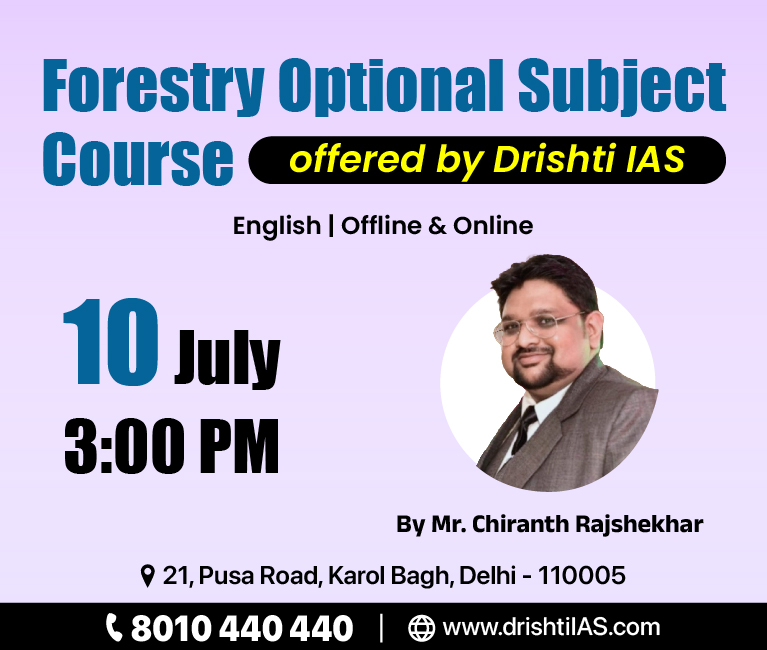
Indian Heritage & Culture
Abhay Mudra in Buddhism
For Prelims: Origin of Buddhism, Mudras, Principles of Buddhism, Sandalwood
For Mains: Significance of Buddhism, Indian Literature, Spread of Buddhism in Ancient India.
Why in News?
Recently, the leader of opposition while delivering his speech in Parliament used the symbolic image of Lord Shiva and the ‘Abhay Mudra’ to criticise the government's assault on the idea of India, the Constitution, and those who resisted these attacks.
Leader of Opposition (LoP) in LS
- LoP is a Member of Parliament (MP) who is leader of the largest opposition party having not less than one-tenth seats of the total strength of the Lok Sabha (LS).
- He will be a member of crucial committees such as Public Accounts (Chairman), Public Undertakings, Estimates and also a member of several Joint Parliamentary Committees.
- He is entitled to be a member of various selection committees responsible for appointing heads of statutory bodies like the Central Vigilance Commission, the Central Information Commission, the CBI, the NHRC, and the Lokpal.
- He provides constructive criticism of the government policies and to provide an alternative government.
- The leader of Opposition in both the Houses were accorded statutory recognition under the Salaries and Allowances of Leader of Opposition in Parliament Act, 1977 and are entitled to the salary, allowances and other facilities equivalent to that of a cabinet minister.
- The office of the leader of the opposition is not mentioned in the Constitution.
What is Abhay Mudra?
- Mudras: Mudras are hand gestures that are used in Indian dance, yoga, and meditation practices to convey certain meanings and emotions.
- They are believed to facilitate the flow of prana or vital energy in the body and can have therapeutic benefits.
- In Indian classical dance forms, mudras are used to convey emotions, themes, and stories.
- In yoga and meditation practices, it helps in concentration, relaxation, and the cultivation of certain qualities.
- While there are a large number of esoteric mudras, over time Buddhist art has retained only 5 of them for the representations of the Buddha- DharmaChakra Mudra, Bhumisparsha Mudra, Varada Mudra, Dhyana Mudra and Abhay Mudra.
- Abhay Mudra: It is a hand gesture commonly depicted in Buddhist and Hindu iconography, representing the "gesture of fearlessness".
- It is typically formed with the palm of the right hand facing outward at shoulder height, with the fingers pointing upwards.
- Origin: It is associated with the Lord Buddha immediately after he attained enlightenment, portraying a sense of the security, serenity, and compassion that derive from enlightenment".
- The mudra represents the moment when the Buddha tamed a mad elephant, illustrating his ability to grant fearlessness to his followers.
- Association with Other Religions: The Abhaya Mudra is also found in the iconography of other religious traditions, including Christianity and Jainism.
What are Other Types of Mudras in Buddhism?
- DharmaChakra Mudra: In this the hands are held in front of the chest with the thumb and index finger of each hand forming a circle. The remaining three fingers of the hand are extended upwards, representing the Three Jewels of Buddhism: the Buddha, the Dharma (his teachings), and the Sangha (the community of practitioners). The circle made by the thumb and index finger represents the wheel of the Dharma.
- It symbolises the pivotal moment when Buddha preached his first sermon after enlightenment, signifying the initiation of teaching the Dharma.
- This mudra represents the constant cycle of birth, death, and rebirth, and the Buddha's teachings as the means to break free from this cycle.
- Bhumisparsha Mudra: This mudra involves touching the ground with the fingertips of the right hand, while the left hand rests on the lap.
- It represents the moment of the Buddha's enlightenment, and the gesture symbolises the earth witnessing his attainment of enlightenment.
- It is in this posture that Shakyamuni overcomes the obstructions of Mara while meditating on truth.
- Varada Mudra: In this mudra, the right hand is extended downwards, with the palm facing outwards.
- The 5 extended fingers in this mudra symbolise the five perfections: generosity, morality, patience, effort, and meditative concentration.
- Dhyana Mudra: In this mudra, the hands are placed on the lap, with the right hand on top of the left, and the thumbs touching held at a level above the stomach or thighs.
- This mudra symbolises meditation, concentration, and inner peace.
- Anjali Mudra: This is the most common mudra used in Buddhism, and it involves pressing the palms together in front of the chest, with the fingers pointing upwards.
- It represents respect, greeting, and gratitude.
- It is a hand gesture, very similar to Namaskara or Namaste.
- Vitarka Mudra: This mudra is also known as the "teaching mudra" or "gesture of discussion," and it involves holding the right hand up, with the thumb and index finger touching to form a circle.
- It represents the transmission of knowledge and the communication of the Buddha's teachings.
- Uttarabodhi Mudra: In this the hands are held in front of the chest with the fingers of the left hand pointing upward and the fingers of the right hand pointing downward. The thumbs are then placed together in the centre, creating a triangle shape.
- This mudra represents the union of wisdom and compassion, the balance of masculine and feminine energies, and the attainment of enlightenment through the integration of all aspects of thyself.
- Karana Mudra: In this the left hand is brought up to the heart, palm facing forward. The index and little fingers point straight upward. while the other three fingers are curled towards the palm.
- This gesture is often seen in depictions of the Buddha or bodhisattvas, as a symbol of protection and dispelling of negativity (evil). The index finger is said to represent the energy of wisdom and the ability to overcome obstacles.
- Jnana Mudra: In this, the index finger and thumb are brought together to form a circle, while the other three fingers are extended outwards.
- This gesture represents the unity of individual consciousness with the universal consciousness and the connection between the practitioner and the teachings of the Buddha.
- Tarjani Mudra: In this, the index finger is extended upward, while the other fingers are curled towards the palm. Tarjani Mudra, also known as the "threatening gesture".
- It is used as a symbol of warning or protection against evil forces or harmful influences
|
Drishti Mains Question: Buddhism has had a profound impact on Indian society and culture. Discuss the social and ethical teachings of Buddhism and their contribution to the development of Indian civilization. |
UPSC Civil Services Examination, Previous Year Question (PYQ)
Q. Lord Buddha’s image is sometimes shown with the hand gesture called ‘Bhumisparsha Mudra’. It symbolizes (2012)
(a) Buddha’s calling of the Earth to watch over Mara and to prevent Mara from disturbing his meditation
(b) Buddha’s calling of the Earth to witness his purity and chastity despite the temptations of Mara
(c) Buddha’s reminder to his followers that they all arise from the Earth and finally dissolve into the Earth, and thus this life is transitory
(d) Both the statements (a) and (b) are correct in this context
Ans: (b)
Q. With reference to the religious history of India, consider the following statements: (2020)
- Sthaviravadins belong to Mahayana Buddhism.
- Lokottaravadin sect was an offshoot of Mahasanghika sect of Buddhism.
- The deification of Buddha by Mahasanghikas fostered the Mahayana Buddhism.
Q. Which of the statements given above is/are correct?
(a) 1 and 2 only
(b) 2 and 3 only
(c) 3 only
(d) 1, 2 and 3
Ans: (b)
Q. With reference to the religious history of India, consider the following statements: (2016)
- The concept of Bodhisattva is central to Hinayana sect of Buddhism.
- Bodhisattva is a compassionate one on his way to enlightenment.
- Bodhisattva delays achieving his own salvation to help all sentient beings on their path to it.
Which of the statements given above is/are correct?
(a) 1 only
(b) 2 and 3 only
(c) 2 only
(d) 1, 2 and 3
Ans: (b)
Q. Which one of the following describes best the concept of Nirvana in Buddhism? (2013)
(a) The extinction of the flame of desire
(b) The complete annihilation of self
(c) A state of bliss and rest
(d) A mental stage beyond all comprehension
Ans: (a)
Q. Consider the following: (2019)
- Deification of the Buddha
- Treading the path of Bodhisattvas
- Image worship and rituals
Which of the above is/are the feature/features of Mahayana Buddhism?
(a) 1 only
(b) 1 and 2 only
(c) 2 and 3 only
(d) 1, 2 and 3
Ans: (d)
Q. Why did Buddhism start declining in India in the early medieval times? (2010)
- Buddha was by that time considered as one of the incarnations of Vishnu and thus became a part of Vaishnavism.
- The invading tribes from Central Asia till the time of last Gupta king adopted Hinduism and persecuted Buddhists.
- The Kings of Gupta dynasty were strongly opposed to Buddhism.
Which of the statements given above is/are correct?
(a) 1 only
(b) 1 and 3 only
(c) 2 and 3 only
(d) 1, 2 and 3
Ans: (a)
Mains
Q. Pala period is the most significant phase in the history of Buddhism in India. Enumerate. (2020)
Q. Early Buddhist Stupa-art, while depicting folk motifs and narratives successfully expounds Buddhist ideals. Elucidate (2016)


Indian Polity
Allahabad HC on Religious Conversions
For Prelims: Article 25, Article 26, Supreme Court of India, Indian Penal Code, Right to Privacy
For Mains: Religious Conversions in India, Anti-conversions laws and associated issues, Related Supreme Court judgements.
Why in News?
The Allahabad High Court (HC) recently addressed the issue of religious conversions in India, highlighting the potential demographic impact on the majority population.
- Allahabad HC made these remarks while rejecting the bail application of an individual booked under Uttar Pradesh Prohibition of Unlawful Conversion of Religion Act, 2021 and (kidnapping or abduction with intent secretly and wrongfully to confine a person) of the Indian Penal Code.
- This case underscores the court's stance on the constitutional boundaries of religious propagation and the urgent need to curb unlawful conversion activities.
What are the Allahabad High Court Observations on Religious Conversions?
- The court stated that Article 25 of the Indian Constitution, which guarantees freedom of religion, does not provide for conversions but allows for the propagation of religion.
- The court clarified that "propagation" means to promote a religion, but it does not entail converting individuals from one religion to another.
- Court expressed concern that if such conversions continue unchecked, the majority population in India could become a minority and stressed the need to prevent the majority population from potentially becoming a minority due to these conversions.
- The court noted that unlawful conversions, particularly targeting Scheduled Castes(SC)/Scheduled Tribes(ST) communities and economically disadvantaged individuals, are occurring at a rampant pace throughout Uttar Pradesh.
- The court recommended that religious congregations where conversions are taking place should be immediately stopped.
What are the Key Constitutional Provisions Related to Religious Conversion?
- Article 25: Guarantees freedom of conscience and the right to freely profess, practice, and propagate religion, subject to public order, morality, and health. The state can regulate or restrict any economic, financial, political, or other secular activity associated with religious practice.
- It also allows for the regulation of secular activities associated with religious practice and the throwing open of Hindu religious institutions to all classes and sections of Hindus.
- Article 26: Entitles every religious denomination to manage its own religious affairs, subject to public order, morality, and health.
- Articles 27 to 30: Guarantee freedom to manage religious affairs, contribute monetarily to any religion, and set up and administer educational institutions.
Uttar Pradesh Prohibition of Unlawful Conversion of Religion Act, 2021
- It aims to regulate religious conversions and prohibit conversions achieved by misrepresentation, force, undue influence, coercion, allurement, or any fraudulent means.
- Illegal conversion carries standard punishment of 1-5 years imprisonment and a minimum fine of Rs. 15,000. Enhanced punishment of 2-10 years imprisonment and a minimum fine of Rs. 25,000 applies if the victim is a woman, a minor, or belongs to a Scheduled Caste or Scheduled Tribe.
- In mass conversion cases, the punishment is 3-10 years of imprisonment and a minimum fine of Rs. 50,000.
- Repeat offenders may face up to double the relevant punishment. Any marriage conducted for the purpose of unlawful conversion is declared void.
How Has the Supreme Court Interpreted Religious Conversions?
- Rev. Stainislaus Vs. State of Madhya Pradesh, 1977: Upheld anti-conversion laws, ruling that Article 25(1) does not grant the right to convert others , but rather the right to transmit or spread one's religion through the exposition of its principles.
- Sarla Mudgal Vs. Union of India, 1995 and Lilly Thomas Vs. Union of India, 2000: Held that conversions to Islam solely for practicing polygamy were invalid.
- M Chandra Vs. M Thangamuthu & Another, 2010: Established the need for evidence of both conversion and acceptance into the new community.
- Graham Staines Case, 2011: Stated there is no justification for converting someone through force, provocation, or incitement.
- Right to Privacy Case, 2017: Emphasised the constitutional right to freedom of religion, including the ability to choose and express faith, asserting that state interference must be proportionate.
Note
The Supreme Court has yet to provide a definitive ruling on the legal interpretation of "propagate" under Article 25.
What are the Anti-Conversion Laws in India?
- About: Anti-conversion laws in India are regulations that seek to prevent individuals from converting from one religion to another through means such as force, fraud, inducement, or allurement.
- These laws aim to ensure that religious conversions are voluntary and not coerced, protecting individuals from being pressured or misled into changing their faith.
- Historical Context of Anti-Conversion Laws:
- Pre-Independence Era: Before India gained independence, several princely states enacted anti-conversion laws to restrict missionary activities and conversions to Christianity.
- Examples: Raigarh State Conversion Act (1936), Patna Freedom of Religion Act (1942), Sarguja State Apostasy Act (1945), and Udaipur State Anti-Conversion Act (1946).
- Post-Independence Attempts: Efforts to pass central legislation on religious conversion have repeatedly failed.
- Indian Conversion (Regulation and Registration) Bill (1954), Backward Communities (Religious Protection) Bill (1960), and All India Freedom of Religion Bill (1978).
- Despite these failures, several states have enacted their own anti-conversion laws over the years.
- State-Level Anti-Conversion Laws:
-
Odisha (1967): First State to enact a law restricting religious conversions, prohibiting forceful conversions and fraudulent means.
- Madhya Pradesh (1968): Introduced the Madhya Pradesh Dharma Swatantraya Adhiniyam, requiring notification to the District Magistrate for any conversion activities under penalty of law.
- Arunachal Pradesh (1978), Gujarat (2003), Chhattisgarh (2000 and 2006), Rajasthan (2006 and 2008), Himachal Pradesh (2006 and 2019), Tamil Nadu (2002-2004), Jharkhand (2017), Uttarakhand (2018), Uttar Pradesh (2021), and Haryana (2022).
- These states have enacted laws prohibiting various forms of religious conversions, with enhanced penalties for conversions involving SCs, STs, minors, and women.
-
- Centre’s Stand:The Union Ministry of Home Affairs stated in an affidavit to the Supreme Court that the right to religion does not include the right to convert others, especially through fraudulent or coercive means.
- They referred to the Supreme Court's interpretation of Article 25 and emphasised that fraudulent conversion affects an individual's freedom of conscience and can disrupt public order.
- The Centre has not clarified if it will introduce a special law on religious conversions as requested in the petition.
- Pre-Independence Era: Before India gained independence, several princely states enacted anti-conversion laws to restrict missionary activities and conversions to Christianity.
What are the Challenges to Anti-Conversion Laws in India?
- Constitutional Concerns: The primary challenge to anti-conversion laws in India revolves around their constitutionality, particularly concerning fundamental rights guaranteed under the Indian Constitution.
- Critics argue that these laws infringe upon the rights to freedom of religion, expression, and privacy, as enshrined in Articles 19, 21, and 25.
- In 2012, the Himachal Pradesh High Court ruled certain provisions of the state's 2006 anti-conversion law as unconstitutional. It upheld the right to privacy, stating that the requirement of giving a month's notice to the district magistrate violated this right.
- In 2021, Gujarat High Court stayed the provisions of the Gujarat Freedom of Religion Act, 2003, which were amended to include marriage as grounds for prohibiting conversions.
- The court upheld the right to choice of an individual, stating that the Act gave the impression that inter-faith marriages followed by conversion could be deemed illegal.
- Burden of Proof: Anti-conversion laws often shift the burden of proof onto the accused to demonstrate that conversions were not carried out through prohibited means.
- Impact on Interfaith Marriages: Recent state law amendments declare marriages null if they involve conversion solely for the purpose of marriage.
- Critics argue that these provisions interfere with individuals' rights to freely marry and choose life partners regardless of religious differences.
- Allegations of Misuse and Targeting: Critics argue that anti-conversion laws are often misused to target religious minorities and dissenting voices, leading to concerns about exacerbating communal tensions and discriminating against vulnerable groups such as Dalits, Adivasis, and women.
Way Forward
- Establish clear and unambiguous definitions of vague terms like "force,",”allurement”, and "coercion" in anti-conversion laws to minimise subjective interpretations and potential misuse.
- Ensure that anti-conversion laws uphold the principle of presumption of innocence (every person accused of any crime is considered innocent until proven guilty).
- Create a uniform set of regulations across states to avoid confusion and potential misuse.
- Explore the possibility of a national framework on religious conversions that respects individual freedoms while safeguarding against coercion.
- This could offer more uniformity and potentially prevent misuse at the state level.
- Encourage interfaith dialogue programs and educational initiatives to foster understanding and respect between religious groups.
|
Drishti Mains Question: Q. Analyze the socio-political implications of anti-conversion laws on religious minorities in India. How do these laws intersect with issues of communal harmony and individual freedoms? |


Important Facts For Prelims
Death Anniversary of Swami Vivekananda
Why in News?
Every year, 4th July is observed as the death anniversary of Swami Vivekananda. He is considered as the father of modern Indian nationalism and is also credited with raising interfaith awareness and bringing Hinduism to the status of a major world religion in the late 19th century.
What are the Key Points About Swami Vivekananda?
- About: Vivekananda was born as Narendranath Datta on 12th January 1863 in Calcutta.
- In 1893, upon the request of Maharaja Ajit Singh of the Khetri State, he took the name ‘Vivekananda.’
- He is credited for introducing yoga and Vedanta to the West.
- He died at Belur Math (1902) in West Bengal. It is the headquarters of Ramakrishna Math & Ramakrishna Mission.
- National Youth Day is held every year on 12th January to observe the birth anniversary of Swami Vivekananda.
- Spiritual Contribution:
- He was one of India's greatest spiritual leaders and intellectuals and was the chief disciple of the Ramakrishna Paramhansa.
- Vivekananda's message to the world about human values is rooted in the teachings of the Upanishads and the Gita, as well as the examples set by the Buddha and Jesus.
- His mission was to bridge the gap between paramartha (service) and vyavahara (behavior), as well as between spirituality and daily life.
- He advocated the doctrine of service. Serving jiva (living beings) is considered worship of Siva.
- His landmark speech at the Parliament of the World's Religions in Chicago in 1893 introduced Hindu philosophy (neo-Hinduism) to the Western world.
- He laid emphasis on education for the regeneration of our motherland. He advocated a man-making character-building education.
- He gave the four pathways of attaining moksha from the worldly pleasure and attachment in his books- Raja-yoga, Karma-yoga, Jnana-yoga and Bhakti-yoga.
- He founded the Ramakrishna Mission in 1897 to propagate the ideals of service, education, and spiritual upliftment.
Ramakrishna Mission
- Ramakrishna Mission carries out extensive educational and philanthropic work and expounds a modern version of Advaita Vedanta, a school of Indian philosophy.
- Two objectives of the Ramakrishna movement were:
- to establish a group of monks committed to a life of renunciation and practical spirituality, that can disseminate the universal message of Vedanta.
- preaching and engaging in philanthropic and charitable activities, viewing all men, women, and children, regardless of caste, creed, or color, as true manifestations of the Divine.
- The mission was founded near Kolkata by Vivekananda in 1897 with a twofold purpose: to spread the teachings of Vedanta as embodied in the life of the saint Ramakrishna (1836–86) and to improve the social conditions of the Indian people.
- Motto: “ATMANO MOKSHARTHAM JAGAD HITAYA CHA” (“For one’s own salvation and for the welfare of the world”).


Important Facts For Prelims
Codex Alimentarius Commission
Why in News?
Recently, India participated in the 86th session of the Executive Committee of Codex Alimentarius Commission.
What is Codex Alimentarius Commission (CAC)?
- About:
- CAC is an international food standards body established jointly by the Food and Agriculture Organization (FAO) and the World Health Organization (WHO) in May 1963 with the objective of protecting consumer’s health and ensuring fair practices in food trade.
- Recognition:
- The Agreement on Application of Sanitary and Phytosanitary Measures (SPS) of the World Trade Organization (WTO) recognises Codex standards, guidelines and recommendations as reference standards for international trade and trade dispute settlement.
- Members:
- Currently the Codex Alimentarius Commission has 189 Codex Members made up of 188 Member Countries and European Union.
- India became the member of Codex Alimentarius in 1964.
- Currently the Codex Alimentarius Commission has 189 Codex Members made up of 188 Member Countries and European Union.
-
Codex Standards:
- General Standards, Guidelines and Codes of Practice: These core Codex texts typically deal with hygienic practice, labelling, contaminants, additives, inspection & certification, nutrition and residues of veterinary drugs and pesticides and apply horizontally to products and product categories.
- Commodity Standards: Codex commodity standards refer to a specific product although increasingly Codex now develops standards for food groups.
- Regional Standards: Standards developed by the respective Regional Coordinating Committees, applicable to the respective regions.
- 86th Session of the Executive Committee (CCEXEC) of the CAC:
- India, represented by the CEO of FSSAI, is actively participating in the 86th session of the Codex Alimentarius Commission's Executive Committee (CCEXEC) at the FAO Headquarters in Rome.
- The CCEXEC plays a critical role in reviewing proposals for new work and monitoring the progress of standards development.
- During the session, India strongly supported the advancement of standards development for various spices, including small cardamom, turmeric, and vanilla.
- This initiative is particularly significant for India, being a major producer and exporter of these spices, as it would facilitate smoother international trade.
- India backed the progression of standards for vegetable oils, guidelines for the control of Shiga Toxin-Producing Escherichia coli, and the safe use and reuse of water in food production and processing.
- India, also championed the proposal for developing Codex guidance on food safety considerations related to the use of recycled materials in food packaging.
- This initiative is crucial in addressing global challenges such as climate change, environmental protection, and sustainability.
- India shared its experience with the guidelines developed by FSSAI on recycling post-consumer PET (Polyethylene terephthalate) for food contact applications.
- India, represented by the CEO of FSSAI, is actively participating in the 86th session of the Codex Alimentarius Commission's Executive Committee (CCEXEC) at the FAO Headquarters in Rome.
Food Safety and Standards Authority of India
- FSSAI is an autonomous statutory body established under the Food Safety and Standards Act, 2006.
- FSSAI is responsible for protecting and promoting public health by regulating and supervising food safety and quality in India, operating under the Ministry of Health & Family Welfare.
Related Events and Campaigns
Read more: Journey of Spices in India
UPSC Civil Services Examination, Previous Year Question (PYQ)
Prelims:
Q. Consider the following statements: (2018)
- The Food Safety and Standards Act, 2006 replaced the Prevention of Food Adulteration Act, 1954.
- The Food Safety and Standards Authority of India (FSSAI) is under the charge of Director General of Health Services in the Union Ministry of Health and Family Welfare.
Which of the statements given above is/are correct?
(a) 1 only
(b) 2 only
(c) Both 1 and 2
(d) Neither 1 nor 2
Ans: (a)
Q. As regards the use of international food safety standards as reference point for the dispute settlements, which one of the following does WTO collaborate with? (2010)
(a) Codex Alimentarius Commission
(b) International Federation of Standards Users
(c) International Organization for Standardization
(d) World Standards Cooperation
Ans: (a)
Mains:
Q.1 Elaborate the policy taken by the Government of India to meet the challenges of the food processing sector. (2021)


Rapid Fire
India and ADB to Bolster Pandemic Preparedness
Recently, Government of India and the Asian Development Bank (ADB) signed a USD 170 million policy-based loan to strengthen India's health system preparedness and response capacity to future pandemics.
- The loan will help strengthen India's pandemic preparedness and response capabilities through.
- Strengthened disease surveillance and multisectoral response.
- Strengthened human resources for health.
- Expanded climate-resilient public health infrastructure and innovative service delivery.
- The ADB’s program will be aligned with India's National Health Policy 2017, Pradhan Mantri Ayushman Bharat Health Infrastructure Mission (PM-ABHIM), National One Health Mission, and efforts to strengthen human resources for health.
- It will set up laboratory networks for infectious disease surveillance at state, union, and metropolitan levels.
- It will build robust data systems to monitor and coordinate national health programs for the poor, women, and other vulnerable groups.
- It will regulate and maintain standards of education, services, and professional conduct of nurses, midwives, allied workers, and doctors.
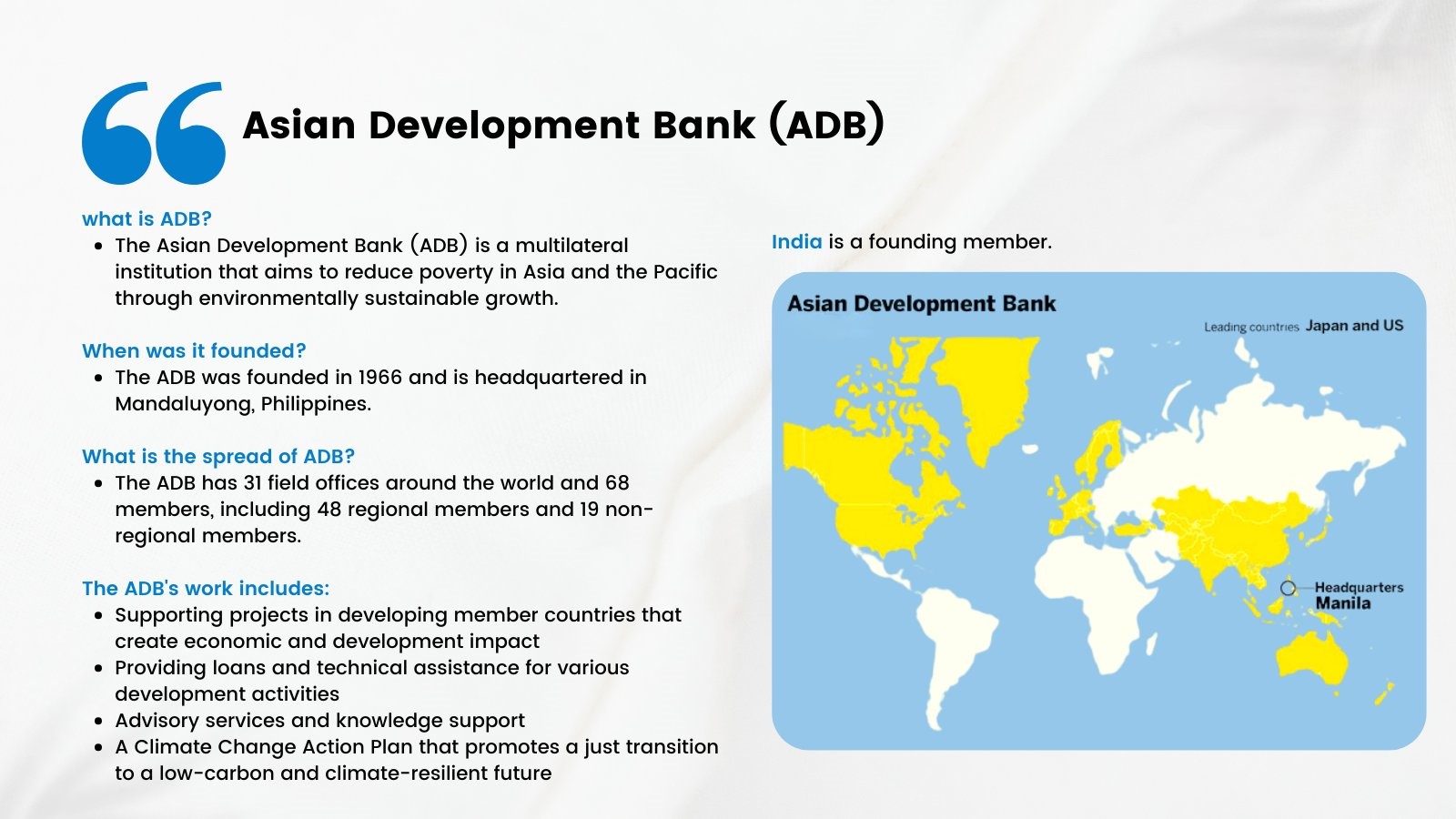
Read more: Asia Development Outlook Report 2024


Rapid Fire
Windfall Tax
Recently, the Indian government has increased the windfall tax on domestically produced crude oil from Rs 3,250 per tonne to Rs 6,000 per tonne.
- A Windfall Tax is a type of tax that is levied on companies or individuals who have unexpectedly and/or dramatically gained large profits, often due to external factors beyond their control.
- It is commonly levied on industries such as oil, gas, and mining.
- The purpose is to capture a portion of the extraordinary profits that companies make and redistribute it for public good.
- It is a strategic measure to promote transparency and fairness and responsible economic practices in the energy industry.
- This hike will impact the profits of oil companies operating in India and reduce their earnings.
- India first implemented windfall profit taxes on 1st July 2022, aligning with other countries that tax excessive profits of energy companies.
- The tax rates are reassessed every 2 weeks, taking into account international crude prices from the preceding fortnight.
Read more: Windfall Tax


Rapid Fire
India's Crude Oil Imports Surge from Russia
- India witnessed a significant rise in crude oil imports from Russia in June 2024, reaching 1.97 million barrels per day (mbpd), the highest since July 2023.
- This increase, up by nearly 15% month-on-month and 2% annually, was driven by reduced Russian crude cargoes to China, redirecting more barrels towards India.
- Both public sector giants like Indian Oil Corporation (IOCL), Bharat Petroleum Corporation (BPCL), Hindustan Petroleum Corporation (HPCL), and private refiners like Reliance Industries (RIL) saw substantial imports, with private refiners importing a record 871,200 barrels per day.
- Concurrently, imports from traditional suppliers in West Asia, particularly Iraq (India’s second largest supplier) and Saudi Arabia, declined significantly. Iraq's shipments fell by 20% month-on-month, while Saudi Arabia's dropped by 36%, influenced by higher official selling prices.
- In contrast, crude oil imports from the US to India continued to rise, signalling shifting global supply dynamics amidst refinery disruptions in Europe.
Read more: Indian Oil Market Outlook to 2030: IEA, Red Sea Disruptions and India's Oil Import Dynamics


Rapid Fire
Zinc's Role in Enhancing Legume Crop Health and Yield
Researchers in France and Denmark, have unveiled a discovery regarding zinc's critical role in legume crops. The study reveals that zinc facilitates nitrogen fixation in legumes, essential for ammonia production and plant nutrition.
- This micronutrient also acts as a secondary signal, managed by the transcription factor Fixation Under Nitrate (FUN), which regulates nitrogen fixation efficiency under varying environmental conditions.
- The findings highlight zinc's ability to optimize nitrogen availability in soils, potentially boosting crop yields and reducing dependency on synthetic fertilizers.
- This insight opens avenues for enhancing agricultural sustainability amidst climate challenges.
Read more: Technology in Indian Agriculture



